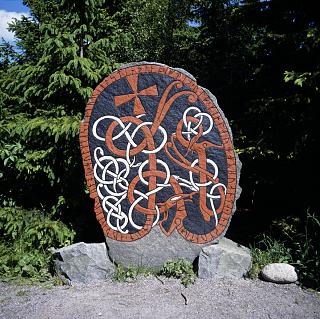 W
WThe church grim is a guardian spirit in English and Scandinavian folklore that oversees the welfare of a particular Christian church, and protects the churchyard from those who would profane and commit sacrilege against it. It often appears as a black dog but is known to take the form of other animals. In modern times, when black dogs are kept as pets in churches and their attached parsonages, these are called church grims since they reside on and guard ecclesiastical property.
 W
WMany references to ravens exist in world lore and literature. Most depictions allude to the appearance and behavior of the wide-ranging common raven. Because of its black plumage, croaking call, and diet of carrion, the raven is often associated with loss and ill omen. Yet, its symbolism is complex. As a talking bird, the raven also represents prophecy and insight. Ravens in stories often act as psychopomps, connecting the material world with the world of spirits.
 W
WThe final act of the Anglo-Saxon poem Beowulf includes Beowulf's fight with a dragon, the third monster he encounters in the epic. On his return from Heorot, where he killed Grendel and Grendel's mother, Beowulf becomes king of the Geats and rules wisely for fifty years until a slave awakens and angers a dragon by stealing a jewelled cup from its lair. When the angry dragon mercilessly burns the Geats' homes and lands, Beowulf decides to fight and kill the monster personally. He and his thanes climb to the dragon's lair where, upon seeing the beast, the thanes flee in terror, leaving only Wiglaf to battle at Beowulf's side. When the dragon wounds Beowulf fatally, Wiglaf attacks it with his sword, and Beowulf kills it with his dagger.
 W
WThe lindworm or lindwurm was a popular motif found on runestones in 11th-century Sweden. Portrayals vary across countries and the stories in which they appear, the creature generally appearing as wingless with a serpentine body, dragon's head, scaled skin and two clawed forelimbs. Depictions imply lindworms do not walk on their two limbs like a wyvern, but move like a mole lizard: they slither like a snake and use their arms for traction.
 W
WA mare is a malicious entity in Germanic and Slavic folklore that rides on people's chests while they sleep, bringing on nightmares.
 W
WThe Nixie, Nixy, Nix, Näcken, Nicor, Nokk, or Nokken are humanoid, and often shapeshifting water spirits in Germanic mythology and of folklore.
In English folklore, Puck, sometimes known as Robin Goodfellow, is a domestic and nature sprite, demon, or fairy.
 W
WThe wild man, wild man of the woods, or woodwose/wodewose is a mythical figure that appears in the art and literature of medieval Europe, comparable to the satyr or faun type in classical mythology and to Silvanus, the Roman god of the woodlands.